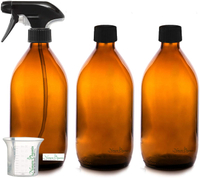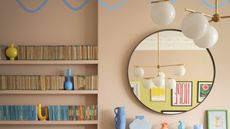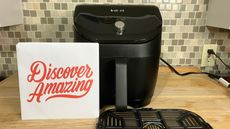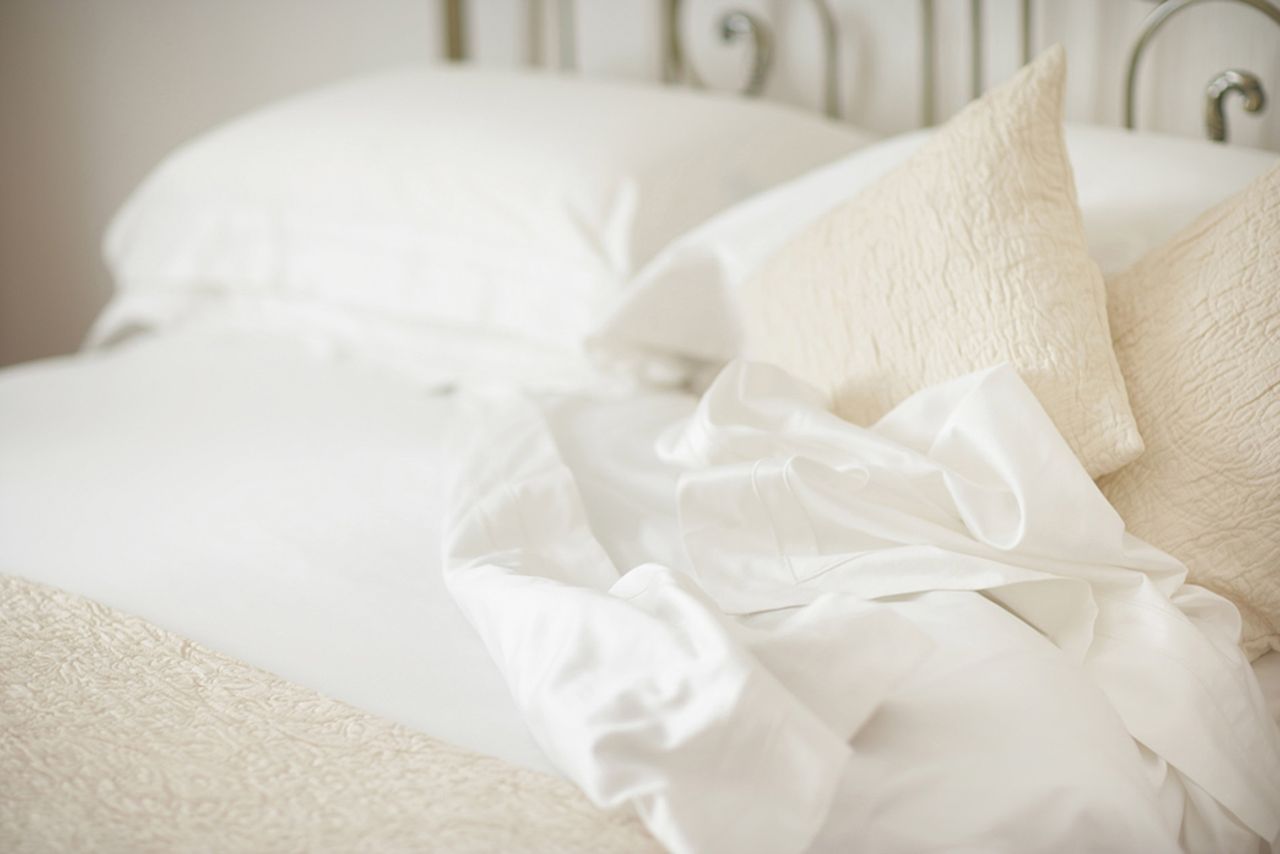

Need to know how to get rid of dust mites in your home? You've come to the right place. Dust mites are bad news for allergy sufferers and can be responsible for other common issues such as skin acne. The unpleasant thing about them, is that these tiny insects are invisible to the naked eye and they can be, everywhere, including the couch and your bed... Not ideal.
For those with one of the best steam cleaners, it can be easier to stay on top of eradicating them from the couch and other soft furnishings as they won't survive a high heat. Otherwise, it's about maintaining a thorough and consistent routine of vacuuming, washing bedding at 60 and for special cases, introducing essential oils and natural repellents to keep their numbers at bay – and your allergies at rest.
Dr Tim Bond from Puressential - the brains behind the evidence-backed plant-based health products, notes, 'Dust mites thrive in house dust because it provides a food supply. House dust contains dead skin cells which humans and animals shed.' While not a problem for most people, dust mites can wreak havoc with the health of those who are sensitive; if that's you, you'll want to get rid of them ASAP.
How to get rid of dust mites
Firstly, limiting dust – and other conditions that dust mites love – plus getting into a regular cleaning cycle can limit their numbers, and any allergic reaction to them.
'Be sure to dust top to bottom and using a microfibre cloth. Using an ordinary duster simply moves dust around. And if your aim is to kill dust mites naturally, don’t use any chemical cleaners and polishes. Essential oils, such as Palmarosa oil kill dust mites naturally.' Adds Bond.
For extreme cases, it's worth investing in a good natural anti-pest spray like Puressential's 100% plant origin spray that you can find on Amazon also – it uses the natural power of Palmarosa essential oils to help eradicate dust mites and the like from bedding, clothes and soft furnishings.
1. Vacuum, dust and air
Regular vacuuming with one of the best vacuums, carpet cleaning, dusting, airing affected rooms by opening windows, and laundering curtains are general steps you can take to kill dust mites.
More specifically, airing your bedding every day – pushing back the covers instead of making the bed – will reduce the humidity that encourages dust mites.
If your allergy is very bad, it may be worth investing in mite-proof duvet covers, pillowcases, bedsheets, or considering one of the best mattresses for allergy sufferers also.
Hypo-allergenic bedding has a tightly woven fabric that makes it nearly impossible for dust mites to penetrate into the duvets, pillows and mattress; it also prevents your body's moisture and dead skin from doing the same, cutting off their food source.
A good mattress protector will provide a barrier to help prevent dust mites breeding in your mattress, but if you're thinking of replacing your mattress, buy one – and a pillow to match – that's hypo-allergenic, to discourage dust mites from living and breeding in your bed. Looking for new bedlinen? Bear in mind that wool and silk are both fabrics that are inhospitable to dust mites.
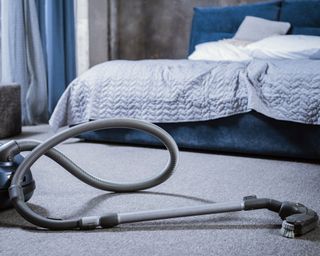
2. Wash bedding at the right temperature
Heat will kill off dust mites since they can't survive temperatures of 60ºC, so washing bedding, pillows and duvets once a week on a hot wash in your washing machine will help your situation. If you have a tumble dryer, putting the bedding through a hot cycle will finish off any that have survived the wash.
Martha Stewart shares her top tip for cleaning pillows with dust mites, too. 'Set the machine to the gentlest cycle, using warm water; add a small amount of a mild liquid detergent (powder detergent may leave a residue), then fill the tub loosely with your pillows. Repeat the rinse cycle to remove detergent completely,' she said.
If washable on a hot wash, launder soft toys once a week at 60ºC.
Dust mites also can't survive below 16ºC, so if you have items that can't be washed at high heat, kids' toys perhaps, consider freezing your child's favorite soft toys once a week in a plastic bag in the freezer. Then, simply remove them from the freezer and shake them well outside to remove the dead mites and their feces. Nice.
3. Wipe down surfaces regularly
Dusting by wiping surfaces down with a damp cloth or basic microfibre cloth from Amazon will stop you launching dust mites into the air as you would do with a regular duster. Dispose of the dust by putting it on a hot wash after cleaning with some of the best cleaning products.
A thorough vacuuming once a week – rather than a light vacuuming every few days – with a HEPA filter vacuum cleaner will remove dust mites and their faeces (HEPA stands for High-Efficiency Particulate Air, and these vacuums work by trapping small particles in a fine mesh).
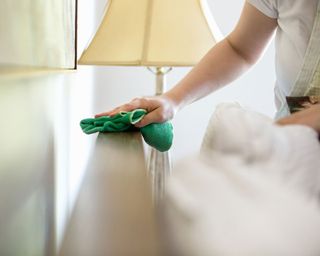
4. Invest in a steam cleaner
If you can afford to invest in even a basic steam cleaner, it can be worth it for allergy sufferers.
Lynsey Crombie, a.k.a Queen of Clean explains how 'Mattresses are covered in mites. These mites feed on dead skin that we naturally shed in our sleep. This means that you are rolling around and inhaling all kinds of nasty particles which could include fungal spores, bacteria, plasticisers and flame retardants.'
So, using a steam cleaner to clean a mattress is ideal. But, steam cleaning carpets, rugs, and furniture is a good place to start also. Do this once a week if your allergy is particularly bad, then vacuum the surfaces afterwards to remove them and their faeces. And, when you're cleaning, wearing a mask can stop you inhaling the dust that will aggravate your reactions.
5. Control heat and humidity
Dust mites love living in an environment that's similar to what we enjoy – room temperatures between 24°C and 27°C, and humidity at around 70 per cent to 80 per cent suits them just fine, making breeding conditions perfect. Investing in a dehumidifier is wise for bedrooms, especially in summer, and if you don't have air con.
Otherwise, keep heating at no higher than 21°C, which is comfortable for most of us, but not so much for dust mites. Airing rooms to keep humidity levels low will also discourage breeding – if your rooms suffer badly from condensation or it's not practical to air rooms (perhaps your bedroom is on the ground floor), putting a dehumidifier on a timer and setting it to run for an hour or so every morning after you've left for work will do the trick.
6. Use Diatomaceous earth to destroy dust mites
This is one of our favorite methods for killing dust mites, even if it sounds a bit out there. Diatomaceous earth is a natural fine powder made from silica rock that you can sprinkle on surfaces where dust mites live (beds, pet beds, furniture, carpets...) to kill them. It works by piercing their exoskeleton as they pass through it, which will kill them instantly.
Leave the powder for as long as possible – all day while you're out of bed is a good option – then vacuum it up (but ensure you're using a vacuum without a filter so that the powder doesn't clog it up).
This product is safe for us and for our pets, and can also be used to kill fleas and bed bugs.
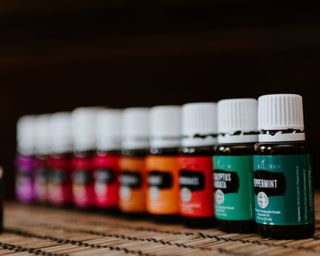
7. Try tea tree oil or Palmarosa
Tea tree oil is a natural antibacterial, antiviral, and anti-fungal oil that is said to kill dust mites, and is definitely worth a try if your allergies are bad.
Here's how to use it at home:
- Mix two cups of distilled water with two tablespoons of tea tree oil and two tablespoons of eucalyptus oil in a dark spray bottle (so you can store it away without light spoiling the oils).
- Spray it liberally onto bedding, furniture and carpets at least once a week – bonus, it will make your home smell nice, too.
Bond recommends Palmarosa essential oil, found in the new Puressentiel’s Anti-Pest Fabric Spray which kills and staves off house pests, the natural way. He said, 'Containing the power of Palmarosa essential oil, this spray can be used on textiles in the home, such as bedding, mattresses, sofas, cuddly toys, as well as indoor furniture. The Puressentiel Anti-Pest Fabric Spray’s formula contains 0% Propellant Gas and leaves a fresh fragrance when used. Plus, a multi-directional pump means the spray can be used in any direction, making application even easier. Puressentiel Anti-Pest Fabric Spray can be used on all textiles that are machine-washable at temperatures over 60°C, as well as non-washable textiles such as furniture, curtains, and car seats, at risk of infestation. It’s best however to treat one textile at a time.'
'To use, spray the surface you wish to treat for 16 seconds per meter² from 30 cm away. One 150ml spray will cover the equivalent of around four standard double mattresses. Leave the spray for four hours and then air and vacuum or, if you’re working on textiles that come into contact with skin, opt for a machine wash.'
8. Swap carpets for hard flooring
Dust mites love to live in carpets because carpets are the perfect environment for trapping dead skin and pet dander.
If the measures above aren't working for you, it could be worth swapping carpets for hard flooring.
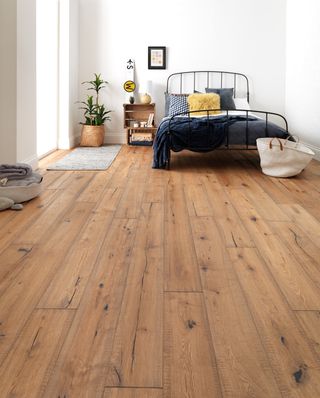
9. Cut down on soft furnishings
Love a throw cushion but constantly sneezing on the sofa or in your bedroom? Cutting down on soft furnishings (the home of dust mites) is another option for allergy sufferers.
The fabric captures the dust and moisture in the air that dust mites love. Every time you disturb or plump these cushions, the dust will be thrown up into the air and on to other surfaces, and you'll get an allergic reaction.
Don't want to cut down on them? Steam clean them and shake them out in the garden once a week.

10. Keep your pets (and their bedding) clean, too
As we said, dust mites love pet dander, so hot washing their bedding once a week and regularly grooming your pets will keep dust mites at bay.
If you have a cat or dog that sheds a lot, you'll need to step up the vacuuming, too. If your vacuum's packed it in, have a look at our tried-and-tested guide to the best vacuums for pet hair. This won't only help you – some pets suffer from dust mite allergies, too.
Finally, keep your pets off the bed and, ideally, out of the bedroom – dust mites eat pet dander, too.
11. Get an air purifier
Fortunately, dust mites are tiny enough to be removed via a HEPA filter in a powerful air purifier. Although it's best to combine all the methods outlined above if you're wondering how to get rid of dust mites, an air purifier will provide much-needed instant relief if you're an allergy sufferer. To help you decide, take a look at our guide to the best air purifiers.
How will I know if I have dust mites?
Dust mites breed prolifically, meaning there very well may be millions of them living and feeding on the clothing fabrics, bedding, soft furnishings and carpets in your home – in fact, anywhere that dust gathers.
Bond explains 'Dust mites are present in all homes. You can’t see them with the naked eye. You need a microscope to see them and a test kit. But as that is impractical for most use and dust mites are found in all homes, it is pretty safe to assume your home has them.
'As well as dust mites, bed bugs, fleas and moths are all common in homes and all of them can be the cause of infuriating and often painful symptoms such as rashes, bumps, itching and even skin swelling and blisters. Those who are allergic to the pests may also suffer from coughs, runny noses, and sneezing. Dust mite allergy may exacerbate asthma. Dust mites do not cause these symptoms in everyone but the cause of these symptoms may well be dust mites. For many of us, these symptoms can wreak havoc on our day-to-day lives. Symptoms can occur year-round.'
During its lifetime, a dust mite can produce up to 200 times its own body weight in faeces and cast skin shells, and it's these that trigger allergic reactions in some of us. If you're unsure that dust mites are the problem, check how to identify bugs to figure it out.
How do I get rid of dust mites ASAP?
Knowing to get rid of dust mites is one thing, but doing it quickly is another issue altogether.
Bond notes, 'A home does not have to be visibly dusty to harbor dust mites, although regular cleaning and hoovering is important. Choosing hard floors over carpets and using dust mite covers on bedding may help. The Puressentiel Anti-Pest Fabric Spray kills and prevents reinfestation with itch mites and dust mites including Dermatophagoides pteronyssinus, the main dust mite responsible for allergies. It also helps kill other common house pests such as clothes moths, fleas, and bed bugs.
'Removing dust mites from the air is challenging. I’d also recommend spraying Puressentiel Purifying Air Spray in the room. Amongst the range of essential oils it contains, peppermint and tea tree oil are known and natural dust mite repellents.'
What kills dust mites naturally?
Using the power of steam and simply vacuuming is a way to keep numbers down.
Bond recommends Palmarosa essential oil which works against other pests also, 'Palmarosa contained in the new Puressentiel Anti-Pest Fabric Spray helps us to avoid chemicals and unnatural ingredients in our homes. Palmarosa contains a high concentration of geraniol and dust mites do not like geraniol. Palmarosa is extremely popular in skincare products and works well for helping to treat itchy skin conditions such as psoriasis and eczema. Interestingly, it has also been proven to help beat itch mite infections in humans too as well as control the mites within the environment.'
Join our newsletter
Get small space home decor ideas, celeb inspiration, DIY tips and more, straight to your inbox!
Lucy is Global Editor-in-Chief of Homes & Gardens having worked on numerous interiors and property titles. She was founding Editor of Channel 4’s 4Homes magazine, was Associate Editor at Ideal Home, before becoming Editor-in-Chief of Realhomes.com in 2018 then moving to Homes & Gardens in 2021. She has also written for Huffington Post, AOL, UKTV, MSN, House Beautiful, Good Homes, and many women’s titles. Find her writing about everything from buying and selling property, self build, DIY, design and consumer issues to gardening.
- Jenny McFarlaneSenior Digital Editor
- Camille Dubuis-WelchFormer Deputy Editor
-
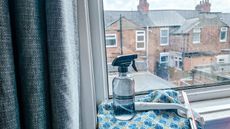 How to clean windows without streaks — 5 easy steps that cleaning pros always follow
How to clean windows without streaks — 5 easy steps that cleaning pros always followThis method on how to clean windows is favored by professional cleaners. We've asked them for the steps you should follow, plus picked cleaning buys
By Eve Smallman Last updated
-
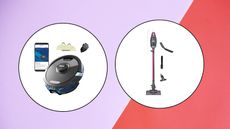 The latest Shark sale deals are perfect for pollen-proofing your home — with up to $150 off our favorite vacuums
The latest Shark sale deals are perfect for pollen-proofing your home — with up to $150 off our favorite vacuumsWe found the latest Shark sale deals on vacuums that are sure to be swooped up, especially as spring blooms trigger pollen allergies and we're in need of extra cleaning
By Danielle Valente Published
-
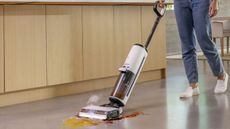 Tineco Floor One S7 steam wet-dry vacuum review — spotless floors with minimal effort
Tineco Floor One S7 steam wet-dry vacuum review — spotless floors with minimal effortOur contributing editor, Camryn Rabideau, tests the Tineco Floor One S7 steam wet-dry vacuum in her New England homestead property
By Camryn Rabideau Published
-
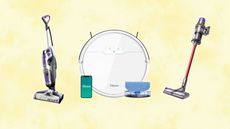 Amazon vacuum cleaners to nab during the retailer's Big Spring Sale — save up to 60% off our go-to small-space finds
Amazon vacuum cleaners to nab during the retailer's Big Spring Sale — save up to 60% off our go-to small-space findsChecking out the savings on Amazon? Vacuum cleaners are a must-buy during their first Big Spring Sale — here are our favorites up to 60% off
By Danielle Valente Published
-
 The Home Edit Walmart cleaning collection has just debuted with finds from $3
The Home Edit Walmart cleaning collection has just debuted with finds from $3Spring cleaning, anyone? The Home Edit Walmart cleaning collection has hit shelves with picks from $3
By Danielle Valente Published
-
 How to clean carpet on stairs — 3 simple steps to a spruced up staircase
How to clean carpet on stairs — 3 simple steps to a spruced up staircaseWant to know how to clean carpet on stairs? Our experts explain the simple steps to a sparkling stairway without too much elbow grease
By Andy van Terheyden Published
-
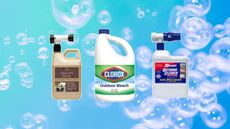 The Home Depot backyard and patio cleaning supplies we're stocking up on before spring
The Home Depot backyard and patio cleaning supplies we're stocking up on before springDon't forget the outdoors when spring cleaning — The Home Depot backyard and patio cleaning buys from $11 will assist with tidying up
By Danielle Valente Published
-
 The Shark Detect Pro vacuum and other models are on sale for St Patrick's Day — perfect picks for your spring clean
The Shark Detect Pro vacuum and other models are on sale for St Patrick's Day — perfect picks for your spring cleanWhether you're eyeing the Shark Detect Pro Vacuum or Shark Pet Cordless Stick Vacuum, shop the St. Patty's Day sale for a discount on the best vacuums on shelves
By Danielle Valente Published
